Microsoft co-founder victim of identity theft
PITTSBURGH:A US soldier’s scheme to defraud one of the world’s richest men has landed him in federal custody. In a criminal complaint unsealed, federal investigators allege Brandon Lee Price changed the address on a bank account held by Microsoft co-founder Paul Allen, then had a debit card sent to his home so he could use it for payments on a delinquent Armed Forces Bank account and personal expenses.
Price was absent without leave at the time.
Price called Citibank in January and changed the address on an account held by Allen from Seattle to Pittsburgh, then called back three days later to say he’d lost his debit card and asked for a new one to be sent to him, an FBI investigator wrote in a complaint filed in February . The card was used to attempt a $15,000 Western Union transaction and to make a $658.81 payment on the Armed Forces Bank loan account the day it was activated. Surveillance footage captured Price trying to make purchases at a video game store and a dollar store, authorities alleged. Investigators found Price was listed as absent without leave from the army and wanted as a deserter, authorities said in the complaint. He was arrested March 2 and ordered detained until April 2 unless the army takes him into custody.Manmohan Singh, Pak PM Gilani may meet on the sidelines of N-summit in Seoul
SEOUL: Prime Minister Manmohan Singh may meet his Pakistani counterpart Yousuf Raza Gilani on the sidelines of the second Nuclear Security Summit that begins here. Though no formal meeting has been sought, the two leaders may come face-to-face during a reception hosted by South Korean President Lee Myung-Bak for the world leaders attending the Summit.
Lee is also hosting a Working Dinner for the leaders at the COEX Convention Centre when they would review the progress made since the Washington Summit. Both the Indian and Pakistani sides said that no formal meeting has been scheduled but at the same time they did not rule out a ‘pull aside’ meeting during the summit as they will be at the venue from morning till evening. “No structured meeting is planned, but a pull aside is always possible,” Pakistan’s Ambassador to South Korea Shaukat Ali Mukadam told reporters here on the sidelines of a ceremonial welcome to Singh at ‘The Blue House’, the presidential residence.
“There are possibilities. There are various places to meet, they could meet in leaders’ lounge,” he said. Mukadam said that Gilani had a tight schedule in Seoul where he would be meeting US President Barack Obama and some other world leaders.
Some reports earlier had suggested that Gilani could meet Singh. The Pakistan Prime Minister will leave Seoul, while Singh leaves Seoul. Sources in the Pakistan government had said that Indian and Pakistani officials are in touch about arranging a meeting between Gilani and Singh.
7.2 magnitude quake strikes central Chile: USGS
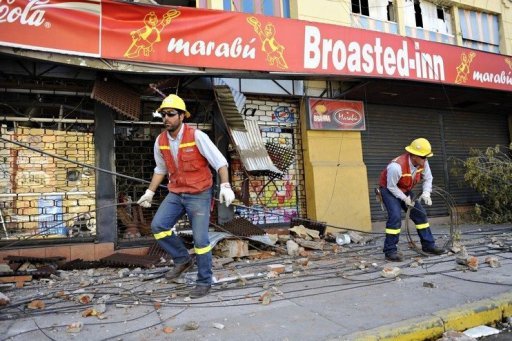 WASHINGTON: A 7.2 magnitude earthquake struck central Chile, in an area hit by an 8.8 earthquake in 2010, the US Geological Survey said. The USGS said the latest quake occurred at 2237 GMT 32 kilometers (20 miles) northwest of Talca, Chile, at a depth of 30 kilometers (18.6 miles). The Maule coastal region in central Chile where the quake occurred has been periodically shaken by powerful aftershocks since an 8.8 magnitude quake February 27, 2010 that claimed more than 500 lives and billions of dollars in damage.
WASHINGTON: A 7.2 magnitude earthquake struck central Chile, in an area hit by an 8.8 earthquake in 2010, the US Geological Survey said. The USGS said the latest quake occurred at 2237 GMT 32 kilometers (20 miles) northwest of Talca, Chile, at a depth of 30 kilometers (18.6 miles). The Maule coastal region in central Chile where the quake occurred has been periodically shaken by powerful aftershocks since an 8.8 magnitude quake February 27, 2010 that claimed more than 500 lives and billions of dollars in damage.‘Rocket taken to site near China border’
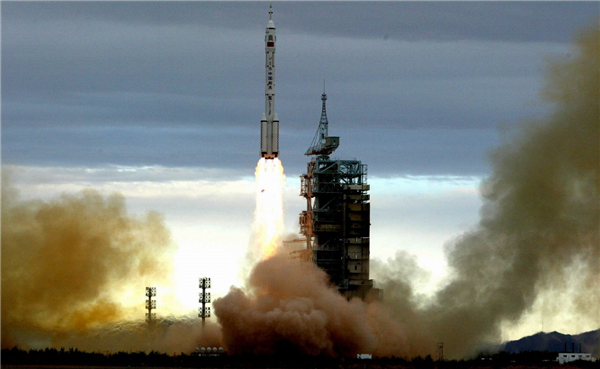 SEOUL: North Korea has moved a long-range rocket to a northwestern site in preparation for a launch next month, South Korean officials said, as Pyongyang pushes ahead with a plan that Washington calls a cover for testing its long-range missile delivery system. The North announced it would launch a satellite using a long-range rocket as part of celebrations marking the 100th birthday anniversary of the April 15 birth of late president Kim Il-sung.
SEOUL: North Korea has moved a long-range rocket to a northwestern site in preparation for a launch next month, South Korean officials said, as Pyongyang pushes ahead with a plan that Washington calls a cover for testing its long-range missile delivery system. The North announced it would launch a satellite using a long-range rocket as part of celebrations marking the 100th birthday anniversary of the April 15 birth of late president Kim Il-sung.In northwestern North Korea, the main body of a longrange rocket was transported to a building in the village of Tongchang-ri in North Phyongan province, the South Korean defence ministry and joint chiefs of staff officials said. The Tongchang-ri site is about 50km from the Chinese border city of Dandong. Analysts describe it is a new, more sophisticated site that would allow North to fire the rocket from west coast to avoid sending it over other countries.
South Korea warns it might shoot down North Korean rocket
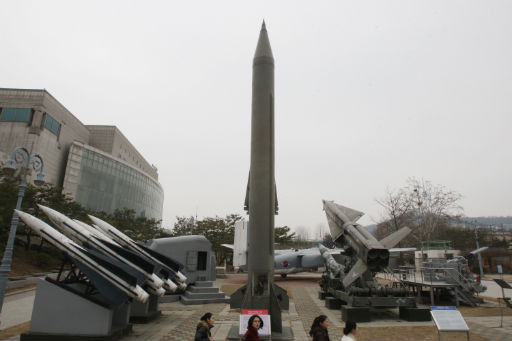 SEOUL: Seoul warned that it might shoot down a North Korean rocket if it strays into South Korean territory, as worries about what Washington calls a long-range missile test overshadowed an international nuclear security summit. Nearly 60 world leaders gathered in Seoul for a conference meant to keep nuclear material out of the hands of terrorists. But North Korea has dominated attention in Northeast Asia since announcing earlier this month that it would send a satellite into space aboard a long-range rocket. North Korea calls the launch part of its peaceful space program and says a new southerly flight path is meant to avoid other countries; previous rockets have been fired over Japan. Washington and Seoul, however, say it’s meant to test delivery systems for long-range missiles that could be mounted with nuclear weapons.
SEOUL: Seoul warned that it might shoot down a North Korean rocket if it strays into South Korean territory, as worries about what Washington calls a long-range missile test overshadowed an international nuclear security summit. Nearly 60 world leaders gathered in Seoul for a conference meant to keep nuclear material out of the hands of terrorists. But North Korea has dominated attention in Northeast Asia since announcing earlier this month that it would send a satellite into space aboard a long-range rocket. North Korea calls the launch part of its peaceful space program and says a new southerly flight path is meant to avoid other countries; previous rockets have been fired over Japan. Washington and Seoul, however, say it’s meant to test delivery systems for long-range missiles that could be mounted with nuclear weapons.“We are studying measures such as tracking and shooting down (parts) of a North Korean missile in case they stray out of their normal trajectory” and violate South Korean territory, said Yoon Won-shik, a vice spokesman at the Defense Ministry. “We cannot help viewing (the launch) as a very reckless, provocative act” that undermines peace on the Korean peninsula, he said.
The South Korean and U.S. militaries know that North Korea has moved the main body of the rocket into a building at a site near the village of Tongchang-ri in North Phyongan province and that it is making preparations for a launch, Yoon said. He said the two allies’ militaries are closely monitoring the situation, but he didn’t elaborate on the North’s preparations. The Tongchang-ri launch site is about 35 miles (50 kilometers) from the Chinese border city of Dandong, across the Yalu River from North Korea. Analysts describe it is a new, more sophisticated site that would allow the North to fire the rocket from the west coast to avoid sending it over other countries.
President Barack Obama and South Korean President Lee Myung-bak urged North Korea in a joint news conference to immediately stop its launch plans, warning they would deal sternly with any provocation. Obama said the move would jeopardize a deal in which the U.S. would ship food aid to the North in exchange for a nuclear freeze. Obama made a symbolic visit to the tense, heavily armed border dividing the Koreas, six decades after the Korean War ended with a cease-fire that leaves the peninsula technically at war.
The launch preparations come as North Koreans and new leader Kim Jong Un mark 100 days since the death of Kim’s father, Kim Jong Il.
Australian drug lord has set up super lab in India?
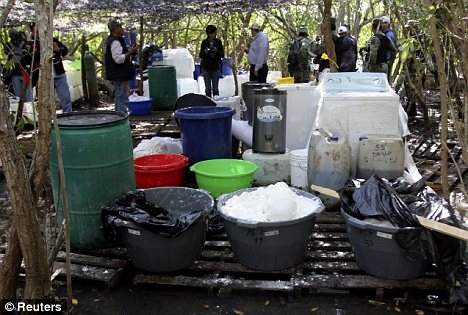 MELBOURNE: One of the most wanted drug lords of Australia, Hakan Ayik, is being suspected of setting up a “super” drug laboratory in India, media report said. It is the second example of Australian bikie groups setting up operations in South Asia, where the precursor chemicals needed to make amphetamines can be legally sourced in large quantities in a bid to facilitate crime, according to a report in The Age.
MELBOURNE: One of the most wanted drug lords of Australia, Hakan Ayik, is being suspected of setting up a “super” drug laboratory in India, media report said. It is the second example of Australian bikie groups setting up operations in South Asia, where the precursor chemicals needed to make amphetamines can be legally sourced in large quantities in a bid to facilitate crime, according to a report in The Age.The laboratory, capable of exporting tonnes of methamphetamine globally, was probed by the US drug enforcement administration, Australian and Indian authorities in 2010. The agencies suspect it was designed to facilitate industrial-scale illicit drug production. Law enforcement officials believe one of Melbourne’s most notorious organized crime bosses, who is associated with Black Uhlans outlaw motorcycle gang, has established links in Pakistan as part of plans to import drug or engage in money laundering.
Victoria police acting assistant commissioner Doug Fryer had warned that Australian bikie clubs were expanding aggressively overseas, including in Spain, Thailand and Indonesia. The US drug enforcement agency and Indian authorities gathered intelligence that Ayik had travelled in 2010 to India, where he sought to buy an industrial pharmaceutical factory able to produce half a tonne of methamphetamine per week.
‘Paris Hilton’ of Russia is the face of anti-Putin stir
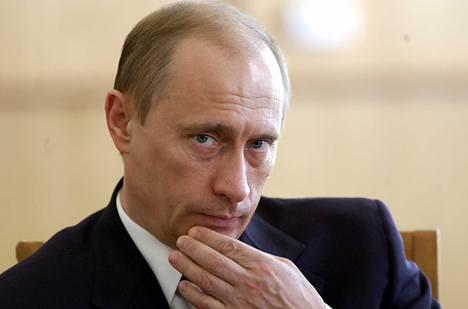 MOSCOW: It is tempting, these days, to imagine that the political change that took place in Moscow this winter was a mirage. With Vladimir V Putin’s first-round victory on the books, and major anti-government protests called off for the moment, most people seemed to slide back, with regret or relief, to routines they abandoned five months ago.
MOSCOW: It is tempting, these days, to imagine that the political change that took place in Moscow this winter was a mirage. With Vladimir V Putin’s first-round victory on the books, and major anti-government protests called off for the moment, most people seemed to slide back, with regret or relief, to routines they abandoned five months ago.Not Kseniya Sobchak, though. The pampered “it girl” of Putin’s Russia, author of “Philosophy in the Boudoir” and “How to Marry a Millionaire,” has restyled herself as a leader of the opposition. Last week, Sobchak hosted protest leaders on her new political talk show, which was cancelled by Russia’s MTV after just one episode and is now broadcast on a web site. She repeated her declaration that she might emigrate if the authorities resist political liberalization. And she continued – very carefully – to speak out against Putin, a family friend widely rumoured to be her godfather. It is difficult to imagine a more unlikely standard-bearer than Sobchak, 30, the ubiquitous blond party girl known as Russia’s Paris Hilton. Most people here know her through her raunchy career in reality television, or the scandalous liaisons and broken engagements that make up the basic molecular structure of Russia’s tabloid culture.
Nevertheless, over the course of the last few months, the transformation of Sobchak has begun to seem real, setting off talk that – against all expectations – she is following the path of her father, Anatoly A Sobchak, whose stand against Communism made him a hero for Russia’s liberals. “I am sincere in what I am saying now, and I was absolutely sincere then,” Sobchak said this month, when a Ukrainian television talk show host, Oleksandr Tkachenko , asked if she was the same person. “Yes, I also was that vulgar fool with pink bows in bright white hair emitting the most unbelievable rubbish. This is also a part of my life, the merry and carefree one. And in fact I lived a number of years as this enfant terrible. Yes, I was that person.”
She added: “I began to change. A situation has taken shape in such a way that a larger number of people saw these changes. But it was the path from my 20th birthday to my 30th.”
Japanese speak out: No to nuclear power
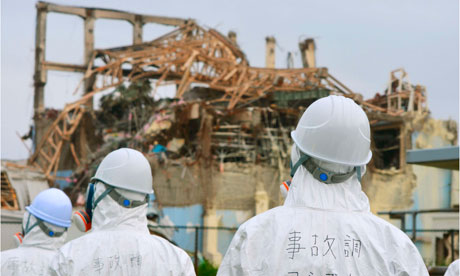 TOKYO: A vast majority of Japanese favour the gradual phasing out of nuclear plants but accept that some reactors need to be restarted to secure enough power in the short term. The poll, comes ahead of decision expected soon by the government on whether to allow the restart of two idled nuclear reactors..
TOKYO: A vast majority of Japanese favour the gradual phasing out of nuclear plants but accept that some reactors need to be restarted to secure enough power in the short term. The poll, comes ahead of decision expected soon by the government on whether to allow the restart of two idled nuclear reactors..According to the poll by Japan Association for Public Opinion Research, 79.6% of those asked were at least more or less in favour of breaking with nuclear power eventually . But 69% backed the restart of some nuclear reactors to ensure enough power. Just 28% were opposed. Since last year’s accident at the Fukushima Daiichi nuclear power plant the country’s commercial nuclear power plants have been undergoing safety inspections with just two out of 54 reactors currently online.
Japanese business circles fear power shortages could slow an already limping economy , but residents near existing plants are against the early resumption of idled reactors , some filing lawsuits seeking injunctions to block the process. Despite the government’s declaration in December that the crippled Fukushima plant had been brought to a stable state, 92% are worried about it, the survey said.
Prime minister Yoshiniko Noda’s government is planning to draft Japan’s overall energy policy later this year including the policy on nuclear power plants. Noda has said Japan should seek to reduce its reliance on nuclear power, seen as a toned-down claim compared with his predecessor Naoto Kan’s announcement that Japan must have the eventual goal of becoming nuclear-free . Only two of the country’s 54 nuclear reactors are currently operating but both are scheduled to be shut by early May which means potential power shortages this summer.
The government has said it will eventually reduce its reliance on nuclear power – which before the crisis accounted for 30% of the electricity demand. Trade minister Yukio Edano said this month that no nuclear reactors in Japan may resume operations in time for summer, leaving the country facing an estimated 10% power shortage during demand hours in summer.
Swiss judge resigns from court trying Khmer Rouge war crimes
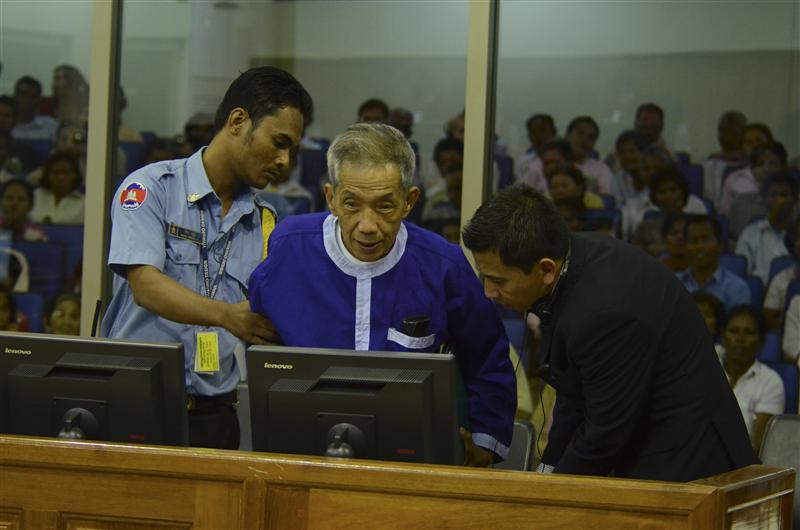 PHNOM PENH (Cambodia): A Swiss judge has resigned from the UN-backed tribunal prosecuting Khmer Rouge war crimes, a move Amnesty International blames on the Cambodian government’s interference with the court’s efforts to seek justice for victims of the 1970s atrocities. Judge Laurent Kasper-Ansermet said that he will step down in May because a Cambodian counterpart has opposed his investigations of new suspects. He said the conflict has created “a dysfunctional situation” on the court, which is seeking justice for an estimated 1.7 million people who died of starvation, exhaustion, lack of medical care or torture during the communist regime’s rule.
PHNOM PENH (Cambodia): A Swiss judge has resigned from the UN-backed tribunal prosecuting Khmer Rouge war crimes, a move Amnesty International blames on the Cambodian government’s interference with the court’s efforts to seek justice for victims of the 1970s atrocities. Judge Laurent Kasper-Ansermet said that he will step down in May because a Cambodian counterpart has opposed his investigations of new suspects. He said the conflict has created “a dysfunctional situation” on the court, which is seeking justice for an estimated 1.7 million people who died of starvation, exhaustion, lack of medical care or torture during the communist regime’s rule.In a statement, Amnesty International called the latest resignation “a significant setback.” The former regime’s chief jailer is in prison and three of its leaders are on trial, but Cambodia’s leadership opposes extending prosecutions to more Khmer Rouge figures, some of whom have become political allies. The country’s powerful ruler, Prime Minister Hun Sen, has publicly chided and threatened the tribunal several times.
“The victims of the Khmer Rouge atrocities must be feeling utter despair,” said Rupert Abbott, Amnesty International’s Cambodia researcher. “The UN must demand that the Cambodian government desists from this political interference, and make clear the consequences should it continue.” Kasper-Ansermet had replaced German judge Siegfried Blunk, who left in October, also citing government interference.
Human Rights Watch, though, had accused Blunk of failing to conduct genuine and impartial research beyond the one suspect convicted last year and the top Khmer Rouge leaders currently on trial in the second case to go before the court. A statement issued by the tribunal said Kasper-Ansermet would resign May 4. Kasper-Ansermet said a Cambodian colleague, You Bunleng, had constantly contested his authority.
He accused Bunleng of “active opposition” to new cases and said that during an informal meeting, Bunleng had refused to even discuss them. Bunleng could not immediately be reached for comment. Prosecutors have compiled substantial evidence for so-called Cases 003 and 004, which include two top military commanders who also were leaders in Cambodia’s post-Khmer Rouge military, according to confidential court documents obtained by AP. The documents allege both took part in purges that resulted in tens of thousands of deaths. The government, however, has openly stonewalled. Hun Sen told Ban last year that new cases would “not be allowed.” He has warned that new cases could spark renewed civil war, though his opposition likely stems from the many Khmer Rouge officials, like himself, who are now in government and who fear investigators could find new evidence of war crimes.
North Korea invites IAEA, says US deal still in force
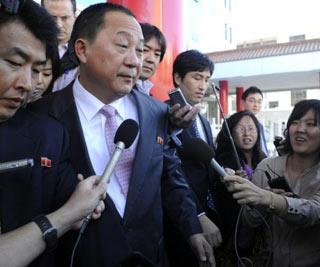 SEOUL: North Korea has invited UN inspectors to monitor a nuclear deal with the United States, insisting the pact remains in force despite its shock announcement of an upcoming satellite launch. Next month’s planned launch, which will violate a United Nations resolution, has sparked widespread complaints that the communist state is testing long-range missile technology which could one day deliver a nuclear warhead.
SEOUL: North Korea has invited UN inspectors to monitor a nuclear deal with the United States, insisting the pact remains in force despite its shock announcement of an upcoming satellite launch. Next month’s planned launch, which will violate a United Nations resolution, has sparked widespread complaints that the communist state is testing long-range missile technology which could one day deliver a nuclear warhead.Washington says any launch would breach the bilateral deal announced on February 29, which offered substantial US food aid for a partial nuclear freeze. The North, which came under new leadership in December under the young and untested Kim Jong-Un, insists otherwise. “The satellite launch is one thing and the DPRK-US agreement is another,” its chief nuclear negotiator Ri Yong-Ho said late last night in Beijing, using the North’s full name, the Democratic People’s Republic of Korea.
The North will implement its deal with the United States in full, according to video footage aired by South Korea’s KBS television. “In order to implement the agreement, we’ve sent a letter of invitation to the IAEA (International Atomic Energy Agency) to send inspectors to our country.” The deal raised modest hopes of progress in decades-long efforts to curb the North’s nuclear weapons drive. It agreed last month to suspend its uranium enrichment programme, along with long-range missile launches and nuclear tests, in return for 240,000 tonnes of US food.
It also promised to readmit IAEA inspectors expelled three years ago. The North insists a peaceful satellite launch is not a missile test. But the United States, Japan, Russia and other nations have called for it to scrap the plan, and even close ally China has expressed concern. US State Department spokeswoman Victoria Nuland said that any IAEA access would be beneficial. “But it doesn’t change the fact that we would consider a satellite launch a violation, not only of their UN obligations but of the commitments that they made to us on Leap Day,” she said.
Some analysts say the North is following a pattern in which it responds to “hostile” criticism of its missile launches with an atomic weapons test. The first such test in October 2006 came three months after a missile launch. The second nuclear test in May 2009 came less than two months after the UN Security Council condemned another rocket launch, purportedly designed to put a satellite into orbit.
A Security Council resolution approved later that year bans the North from further nuclear tests or from launching a ballistic missile for any purpose. Blast-off, between April 12-16, is timed to coincide with mass celebrations marking the 100th anniversary of the birth of Kim Il-Sung — founder of the dynasty which has ruled the impoverished nation since its creation in 1948.
Chaos as Sydney lashed by heaviest rainfall in five years
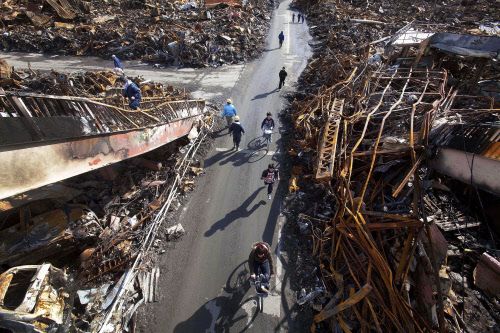 SYDNEY: Australia’s sodden southeast was hit with new flooding was lashed by its heaviest rainfall in five years and the inland town of Forbes was inundated. Large tracts of New South Wales state are under water, with Sydney feeling the force of a La Nina weather system as an estimated 119 millimetres (4.7 inches) of rain fell on the city — the highest daily total since 2007.
SYDNEY: Australia’s sodden southeast was hit with new flooding was lashed by its heaviest rainfall in five years and the inland town of Forbes was inundated. Large tracts of New South Wales state are under water, with Sydney feeling the force of a La Nina weather system as an estimated 119 millimetres (4.7 inches) of rain fell on the city — the highest daily total since 2007.“There has been very, very heavy rain and some very strong winds,” a Bureau of Meteorology spokesman said. La Nina conditions typically bring higher-than-normal rainfall. The downpour sparked widespread flash flooding, caused havoc with bus timetables, forced the closure of railway lines and dozens of roads, and prompted power cuts to at least 2,000 homes.
Several flights from Sydney were delayed or cancelled while there were fears that hundreds of boats on Sydney Harbour could sink after filling up with rainwater, NSW Maritime officials said. “We’ve had a hell of a rain event,” “It is a weather event the likes of which many of us have never seen before. It’s that one-in-a-hundred year event that you hear of.”
Reports said authorities had been called out to more than 1,000 incidents in the city. Further inland, Forbes, in the state’s west, was cut in three by flooding with some 1,000 people ordered to leave their homes as the Lachlan River continued to rise. Heavy rain and flooding has hit three eastern states throughout the week, sweeping two men to their deaths after they attempted to cross waterways in cars, inundating hundreds of homes and causing millions of dollars in damage.
“We’re totally surrounded in the CBD by water,” Forbes mayor Phyllis Miller told national broadcaster. Parts of rural Victoria state are also struggling, with residents from the northern town of Nathalia evacuated as floodwaters threatened to breach both its main levees. Treasurer Wayne Swan said it was too early to establish the cost of the floods, although some estimates have put it as high as Aus$1 billion ($1.05 billion). But Swan expects there will be a significant impact on the New South Wales agriculture sector.
“It’s far too early to tell what the economic cost of these floods will be. Many parts of the state (NSW) are still under water. “We won’t know the damage to the public infrastructure. We won’t know the damage to the private infrastructure. So what we’ve got to do is assess that as quickly as we can and make sure we get help to those most in need.” Floods in eastern Australia last year that claimed more than 30 lives and left damage bills of some Aus$6 billion.
Venezuela’s cancer-stricken Hugo Chavez eyes re-election
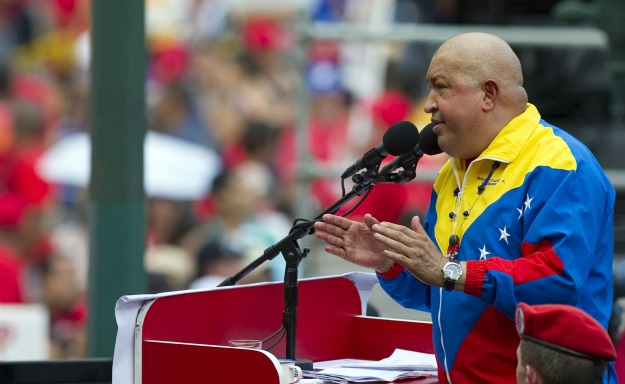 CARACAS: Venezuela’s charismatic President Hugo Chavez is facing a re-election vote on October 7 that could prove to be the toughest race of his 13 years in power. But the president is sick with an unknown type of cancer and faces a course of radiation therapy after a third surgery in less than a year just as the grueling campaign season kicks into high gear. Chavez’s cancer throws the future of his socialist “revolution” into question and could reshape the region that has been influenced by Venezuela’s leftists politics for more than a decade.
CARACAS: Venezuela’s charismatic President Hugo Chavez is facing a re-election vote on October 7 that could prove to be the toughest race of his 13 years in power. But the president is sick with an unknown type of cancer and faces a course of radiation therapy after a third surgery in less than a year just as the grueling campaign season kicks into high gear. Chavez’s cancer throws the future of his socialist “revolution” into question and could reshape the region that has been influenced by Venezuela’s leftists politics for more than a decade.Here are some possible scenarios of what could happen in South America’s top oil exporter: Chavez recovers, heads strong into October 7 vote After a recurrence of cancer last month, Chavez says he is recovering fast, denying rumors his cancer had metastasized, or spread. He said he will be home from Cuba, where he is being treated. Recent state television broadcasts of Chavez carrying out day-to-day business from abroad are aimed at convincing the public he is fully at the helm of government and exuding good health.
Senior government officials say they have no “Plan B” for the October 7 election and are sticking to Chavez as the ruling party’s only candidate. They insist he will soon be back on the streets to woo voters. If Chavez can make another thundering comeback from cancer, it could give him a renewed sympathy bounce in the polls. After surviving some dozen votes, national protests and a brief coup, a recovery could add to his legend of being able to overcome anything, while making him more human in eyes of supporters.
Chavez hitting the campaign trail and meeting face-to-face with voters across the country would suck the air out of the opposition’s platform of focusing on problems of everyday Venezuelans. In the past, long absences for medical treatment allowed his rivals to take the limelight, a prospect he cannot afford during election season. The opposition wants to run a positive, non-confrontational campaign, but if Chavez takes the lead hurling insults, it will be harder for them not to respond. This would place them at a disadvantage with voters looking for an alternative to the attack tactics of the Chavez camp.
The president will also be helped by a pre-election spending push on popular welfare programs funded by oil dollars, as the government rushes to finish thousands of housing units for the poor. Public spending has increased 55 percent during the first two months of 2012 over the same period last year, giving a tailwind to Chavez’s election hopes, said Boris Segura from Nomura Securities. A healthy Chavez who appears strong enough to govern for another six years will be a formidable candidate.
Suu Kyi will fight polls, but won’t vote
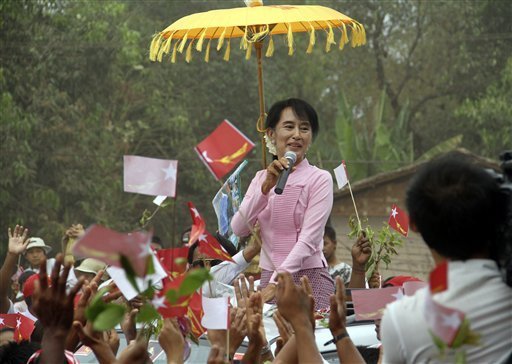 YANGON (MYANMAR): Myanmar opposition leader Aung San Suu Kyi will not vote in the upcoming byelections despite running for a seat in the parliament, an official with her party said. Even though Suu Kyi will be running for her National League for Democracy in the southern Yangon district of Kawhmu on April 1, she won’t vote there because she does not live in the district, party spokesman Thein Oo said.
YANGON (MYANMAR): Myanmar opposition leader Aung San Suu Kyi will not vote in the upcoming byelections despite running for a seat in the parliament, an official with her party said. Even though Suu Kyi will be running for her National League for Democracy in the southern Yangon district of Kawhmu on April 1, she won’t vote there because she does not live in the district, party spokesman Thein Oo said.Thein Oo said that in order to register, Suu Kyi would have to change her home’s registration from where she lives now in a central district of Yangon, a complicated procedure. The decision not to register in Kawhmu does not affect her candidacy already approved by the election commission. There is no byelection in Suu Kyi’s home district, so she won’t vote at all. Suu Kyi, had earlier said that it would have been the first time in her life that she could freely cast her ballot.
Venezuela’s Chavez confirms cancer has returned
 CARACAS: Venezuelan President Hugo Chavez admitted publicly for the first time that his cancer had returned and said he faces a new round of radiotherapy treatment after having a second malignant tumor removed in Cuba. The news not only throws Venezuela into turmoil, but could have implications around the region, amid expectations that the man who arguably is Latin America’s dominant figure may be forced, even temporarily, to cede the public stage.
CARACAS: Venezuelan President Hugo Chavez admitted publicly for the first time that his cancer had returned and said he faces a new round of radiotherapy treatment after having a second malignant tumor removed in Cuba. The news not only throws Venezuela into turmoil, but could have implications around the region, amid expectations that the man who arguably is Latin America’s dominant figure may be forced, even temporarily, to cede the public stage.“The tumor was completely removed and what we assumed was confirmed: It’s a recurrence of the cancer I was originally diagnosed with,” Chavez, who is facing a tough reelection battle later this year, said on state television. The 57-year-old underwent surgery in Havana last week for what he had called a “lesion” — it was removed from the same area, around the pelvis, where a first tumor was extracted in June 2011.
After the initial surgery and chemotherapy, the firebrand leader, a key foe of the United States, had declared himself cancer-free. Chavez, who has been in Cuba for treatment since February 24, said that the new tumor was about two centimeters in length — much smaller than the earlier one, which he described as being “about the size of a baseball.” No date has been announced for his return to Venezuela. Officials in Caracas have never specified what type of cancer the president is suffering from, but they have denied the disease has spread to other organs, as many observers suspect.
The Venezuelan leader expressed relief over “the absence of (additional) lesions” in the affected area and the nearby organs, which he said suggested that the cancer had not traveled throughout his body. “No spreading, no metastasis, no lymph nodes — none of that, thank God,” he said. “That’s the reason why we are so optimistic in this fight.”
Chavez, who has been in power since 1999, first announced last summer that he had cancer, shocking this oil-exporting nation. He remains popular, especially among the poor and also is the inspiration for legions of loyalists who see him as quasi-invincible and indispensable for the “socialist revolution” of South America’s largest oil-producing country. Chavez also has served as the unofficial mentor of several left-leaning governments in the region.
Re-elected three times, Chavez survived a coup attempt in 2002, made a habit of staring down the country’s powerful nemesis the United States and has consorted with Cuba, shunned by many other countries in the region. But his cancer has upended the country’s political scene. Uncertainty over the president’s future hits pro-Chavez forces, who fear being leaderless, as much as the country’s anti-Chavez faction — which had made opposing the president and his policies their focus.
The Venezuelan leader appeared to be in good spirits during broadcast, in which he was shown alongside his foreign minister Nicolas Maduro and other government officials, as well as his sister Rosa and his older brother Adan Chavez, the governor of Venezuela’s Barinas state. The president said it could be weeks before he begins his new radiation treatment because he must wait for surgical incisions to heal and said other complementary treatment options” had not been ruled out.
Chavez faces a strong challenge in October elections from 39-year-old Henrique Capriles, who was chosen as the sole candidate to run against him by a unified opposition and who could be further strengthened by the president’s medical problems. Capriles, who was attending a campaign rally in Caracas, blamed shots fired at the event on the ruling party. One person was reportedly wounded.
Deadly Australia floods spark new evacuation
 SYDNEY: Australian emergency services ordered thousands more to evacuate a New South Wales town threatened by rising floodwaters, as the crisis claimed a second life when surging water swept a car off the road. Days of heavy rain have hammered the eastern states of Queensland, New South Wales and Victoria, swelling rivers, flooding farmland and forcing the closure of bridges and roads. New South Wales emergency officials and police ordered thousands to evacuate the centre of the town of Wagga Wagga as the Murrumbidgee river threatened to breach the city’s levee barriers.
SYDNEY: Australian emergency services ordered thousands more to evacuate a New South Wales town threatened by rising floodwaters, as the crisis claimed a second life when surging water swept a car off the road. Days of heavy rain have hammered the eastern states of Queensland, New South Wales and Victoria, swelling rivers, flooding farmland and forcing the closure of bridges and roads. New South Wales emergency officials and police ordered thousands to evacuate the centre of the town of Wagga Wagga as the Murrumbidgee river threatened to breach the city’s levee barriers.People had already been ordered to evacuate homes in the surrounding area after the river burst its banks in places. “We’re encouraging people to move now,” “Don’t delay. This is a very serious issue.”
Across New South Wales, more than 5,000 people had already been ordered to evacuate, with another 2,000 stranded. In Wagga Wagga, residents earlier said there was an eerie calm, as floodwaters surged under blue skies and sunshine.
“It’s so strange, it’s a beautiful day in Wagga, so we’re just sitting around, drinking tea and waiting for the river to quietly engulf the floodplain,” local man Tim Kurylowicz told. “What was a relatively small river two days ago is like an endlessly wide lake, with treetops swishing amongst the water,” added Kurylowicz, who had already been evacuated to an unaffected part of the city.
Authorities again warned people against driving their cars through floodwaters after more than 30 rescues overnight, including that of two adults and three children who had been trapped in a car in Wagga Wagga. One man died at Araluen in southern New South Wales at the weekend after being washed downstream as he attempted to drive through floodwaters. His two companions were rescued, one reportedly clinging to a tree.
And the toll rose after a man died when his car was swept off a road in heavy flooding in the southeast Queensland town of Glenwood, near Gympie.
Environmentalists in ‘fantasy land’, says Australia
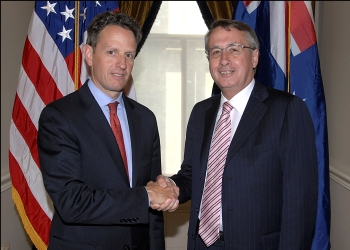 SYDNEY: Australian Trade Minister Craig Emerson said environmental activists were living in “fantasy land” after a plan to disrupt the country’s coal export boom was leaked to the media. Greenpeace is spearheading a multi-million dollar campaign to disrupt and delay key projects and infrastructure by eroding public support for the industry while funding legal challenges against controversial projects.
SYDNEY: Australian Trade Minister Craig Emerson said environmental activists were living in “fantasy land” after a plan to disrupt the country’s coal export boom was leaked to the media. Greenpeace is spearheading a multi-million dollar campaign to disrupt and delay key projects and infrastructure by eroding public support for the industry while funding legal challenges against controversial projects.The plan also involves exploiting opposition to coal-seam gas to put pressure on governments to block mining, citing confidential documents. Australian resources, including coal, are in big demand from developing countries such as India and China as they build power projects to fuel their fast-growing economies. But environmentalists are concerned about the impact of the boom on farmland and groundwater aquifers as land is increasingly used for mining, as well as the consequences for climate change. “If we fail to act decisively over the next two years, it will be too late to have any chance of stopping almost all of the key infrastructure projects and most of the mega-mines,” the Greenpeace-led coalition says.
It added that it was seeking investment “to help us build a nationwide coal campaign that functions like an orchestra with a large number of different voices combining together into a powerful symphony”. Emerson said the concept was “recklessly irresponsible”. “The idea of flicking a switch from coal and other fossil fuels to renewable energy cannot be done,” he said.
“We would have a global depression if we just said ‘that’s it, we’re out of coal, we are just going to move to renewable energy’ just because they believe that is good for the world. “It would mean mass starvation and they ought to wake up to that, instead of living in a fantasy land and organising these sorts of campaigns.” The trade minister said Australia was tackling issues of concern by putting a price on carbon pollution from July 1.
From that date, a levy of Aus$23 (US$23.80) per tonne of carbon pollution will apply before the country moves to an emissions trading scheme in 2015
South Korea, US begin military exercise: Spokesman
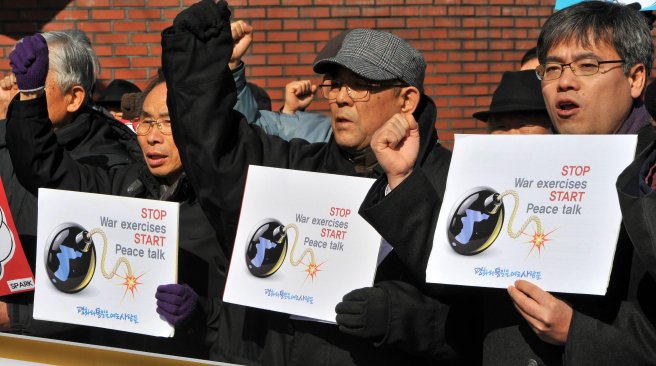 SEOUL: South Korea and the United States began a major military exercise, a Seoul spokesman said, despite North Korea’s threats of possible retaliation. A spokesman for the Joint Chiefs of Staff said the annual Key Resolve drill had started but gave no details. The computerised command post exercise will continue until March 9. The North’s National Defence Commission has denounced the annual drill — which will be followed by joint air, ground and naval field training exercise Foal Eagle from March 1 to April 30 — as a “silent declaration of war”.
SEOUL: South Korea and the United States began a major military exercise, a Seoul spokesman said, despite North Korea’s threats of possible retaliation. A spokesman for the Joint Chiefs of Staff said the annual Key Resolve drill had started but gave no details. The computerised command post exercise will continue until March 9. The North’s National Defence Commission has denounced the annual drill — which will be followed by joint air, ground and naval field training exercise Foal Eagle from March 1 to April 30 — as a “silent declaration of war”.“Our army and people will foil the moves of the group of traitors to the nation and warmongers at home and abroad for a new war with a sacred war of our own style,” the commission, the North’s top ruling body. The United States bases 28,500 troops in the South. The North habitually denounces its annual exercises with South Korean forces as a rehearsal for invasion. Seoul and Washington say the drills are defensive in nature.
The North has taken a hostile tone with the South since its leader Kim Jong-Il died on December 17 and was replaced by his youngest son Jong-Un. The new leader has been appointed armed forces chief and has visited several units in an apparent attempt to burnish his military credentials. Kim inspected two army battalions at a base near the border with the South, state media said, adding that one of them had staged the deadly shelling of a South Korean island in November 2010. The leader ordered “a powerful retaliatory strike” if drills intrude on North Korean territory, it said. The South’s military has strengthened monitoring of the North’s activities to guard against potential attacks.
It said RF-4 and U-2 reconnaissance aircraft would be fully mobilised and F-15K fighter jets would be on emergency standby. Artillery units deployed near the land border will also stand ready to immediately hit back if attacked, it said. The defence ministry declined to comment. Cross-border tension has been high since Seoul accused Pyongyang of torpedoing a warship with the loss of 46 lives near the tense sea border off the west coast in March 2010. The North denied involvement but went on to shell Yeonpyeong island later that year, killing four people and sparking brief fears of war. Hong Hyun-Ik of the South’s Sejong Institute think-tank said Kim Jong-Un’s latest visit was aimed at forging an image as a brave young leader and to garner loyalty from the powerful military.
“It’s eventually aimed to further cement his leadership by highlighting the country’s Songun (military-first) policy and solidify the new leadership as quickly as possible,” Yonhap quoted Hong as saying.
Anti-American fury deepens in Afghanistan
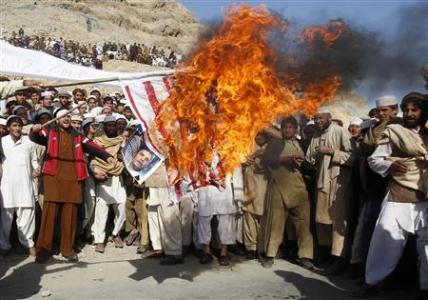 KABUL: A suicide car bomber killed nine people in an attack on a military airport in eastern Afghanistan, officials said, the latest bloodshed since copies of the Qoran were burned at a NATO base last week. There was no official indication the explosion at the gates of Jalalabad airport was linked to the deadly protests, but the Taliban claimed responsibility for the attack as “revenge” for the Qoran burnings. Nineteen Afghan civilians and law enforcement officers and four NATO soldiers were wounded in the blast, a spokesman for the NATO-led International Security Assistance Force (ISAF) in Nangarhar province, of which Jalalabad is the capital, said. Jalalabad airport is almost exclusively used by NATO and the US military. Anti-Western fury has deepened significantly since the desecration of the Muslim holy book at the main NATO Bagram air base in Afghanistan. NATO described the incident as a tragic blunder.
KABUL: A suicide car bomber killed nine people in an attack on a military airport in eastern Afghanistan, officials said, the latest bloodshed since copies of the Qoran were burned at a NATO base last week. There was no official indication the explosion at the gates of Jalalabad airport was linked to the deadly protests, but the Taliban claimed responsibility for the attack as “revenge” for the Qoran burnings. Nineteen Afghan civilians and law enforcement officers and four NATO soldiers were wounded in the blast, a spokesman for the NATO-led International Security Assistance Force (ISAF) in Nangarhar province, of which Jalalabad is the capital, said. Jalalabad airport is almost exclusively used by NATO and the US military. Anti-Western fury has deepened significantly since the desecration of the Muslim holy book at the main NATO Bagram air base in Afghanistan. NATO described the incident as a tragic blunder.The US Embassy warned of a “heightened” threat to American citizens in Afghanistan and many Westerners are on “lock down”, meaning they are not allowed out of their fortified compounds. Riots have raged across Afghanistan over the past week despite widespread apologies from US leaders, including President Barack Obama and military commanders. Seven US military trainers were wounded when a grenade was thrown at their base in Afghanistan’s north.
Chants of “Death to America!” have come to characterize the protests and some demonstrators have hoisted the white Taliban flag. With few signs of the crisis abating, the US ambassador said the United States should resist the urge to pull troops out of Afghanistan ahead of schedule. “Tensions are running very high here. I think we need to let things calm down, return to a more normal atmosphere, and then get on with business,” Ambassador Ryan Crocker.
“This is not the time to decide that we are done here. We have got to redouble our efforts. We’ve got to create a situation that al Qaeda is not coming back,” he said. Under an international agreement, foreign combat forces are due to leave Afghanistan by the end of 2014, a process which is already under way.
The groundswell of anger over the burning of the Koran, which Muslims revere as the literal word of God, has highlighted the challenges ahead as Western forces try to quell violence and bring about some form of reconciliation with the Taliban. The violence has killed more than 30 people and wounded at least 200, including two US troops shot dead by an Afghan soldier who joined rallies in the east. Two U.S. officers were also shot at close range inside the Interior Ministry. In an interview from Rabat, US Secretary of State Hillary Clinton said the violence was “out of hand and it needs to stop”. The shooting of two US officers deep inside the heavily fortified Interior Ministry has intensified the sense of unease among Westerners and deepened the divide with their Afghan counterparts.
The attack illustrates the dilemma faced by NATO forces as they move away from a combat role to an advise-and-assist mission, which will require them to place more staff in ministries. With the 2014 timetable unfolding, pressure is growing for an earlier pullout, especially among Washington’s allies in Europe, where the bloody and expensive war is deeply unpopular.
The high-level killings prompted NATO, Britain, Germany and Canada to withdraw their staff from Afghan ministries. The Taliban also took responsibility for the Interior Ministry attack, although the Islamist group often exaggerates claims involving attacks against Western forces. The ministry said one of its employees was a suspect in the shooting of the two US officers. Afghan security sources also identified a 25-year-old police intelligence officer as a suspect. Afghan President Hamid Karzai has repeatedly urged calm and restraint, although he also maintains that those who burned the Korans must be prosecuted.
Similar desecration of the Koran in the past have also sparked violence, although not as widespread and persistent as the riots and protests over the past week. Last April, seven foreign UN staff were killed when protesters overran a base in the northern city of Mazar-i-Sharif after an obscure pastor from a fringe church in the United States deliberately burned a copy of the Qoran.
Fire leaves cruise ship adrift off Seychelles
 NAIROBI, Kenya: An Italian cruise liner carrying more than 1,000 people was adrift without power in the pirate-infested Indian Ocean after a fire erupted in its generator room. The blaze, which was extinguished, caused no injuries, officials said. Two tug boats from the island nation of Seychelles were steaming toward the drifting Costa Allegra, which had 636 passengers and 413 crew members on board, but they were not expected to arrive until at the earliest. Italian coast guard officials said a large French fishing boat could be the first vessel to reach the stricken cruise liner.
NAIROBI, Kenya: An Italian cruise liner carrying more than 1,000 people was adrift without power in the pirate-infested Indian Ocean after a fire erupted in its generator room. The blaze, which was extinguished, caused no injuries, officials said. Two tug boats from the island nation of Seychelles were steaming toward the drifting Costa Allegra, which had 636 passengers and 413 crew members on board, but they were not expected to arrive until at the earliest. Italian coast guard officials said a large French fishing boat could be the first vessel to reach the stricken cruise liner.Fire on the Costa Allegra immediately raised fears, since it occurred only six weeks after one of its sister ships, the Costa Concordia, hit a reef and capsized off Italy, killing 25 people and leaving seven missing and presumed dead. Both ships are operated by Costa Crociere SpA, which is owned by the Florida-based Carnival Corp. However, company officials rushed to play down concerns. The Costa Allegra is adrift “and being pushed by the current. It is stable and upright,” Giorgio Moretti, the director of nautical operations for Costa Crociere SpA, told reporters in a conference call from company headquarters in Genoa, Italy.
No one was injured in the fire in the generator room and the cause of the fire was under investigation, Moretti said. The fire knocked out power to the ship’s engines as well as to its lights and air conditioning. Italian Coast Guard officials said emergency generators were keeping the ship’s control room illuminated and communications equipment such as radios running. Officials said the cruise liner was holding steady, despite 5-foot (1.5 meter) waves in the area and passengers were being kept in the ship’s big communal rooms, not in their cabins.
Moretti, a longtime Costa captain, said he expected the 636 passengers aboard would spend the night on outside decks. Among them were 212 Italian, 31 British and eight U.S. passengers, he said. Four of the passengers were children ages three or younger. Costa Crociere SpA said in a statement the ship was about 20 miles (32 kilometers) from Alphonse Island, one of the atolls in the Seychelles, a nation of islands and atolls that is a popular tourist destination.
The Allegra, whose Italian name means “merry,” or “happy,” had left northern Madagascar, off Africa’s southeast coast, cruising toward the port of Victoria, Seychelles’ capital, when the fire erupted. Costa said the Allegra had been due in Victoria. The general region where the cruise ship was adrift, off the coast of Tanzania, has seen a rash of attacks by Somali pirates. In 2009, an Italian cruise ship with 1,500 people aboard fended off a pirate attack in the Indian Ocean far off the coast of Somalia. Moretti said an armed nine-member Italian military team on anti-pirate duty was aboard the Allegra, but he insisted the maritime region where the ship was now “isn’t a high risk area for pirates.”
“If pirates attack, the armed guards on board will respond. But as far as I am aware, no pirates have been sighted in the area,” said Seychelles presidential spokeswoman Srdjana Janosevic. A cargo ship was due to reach the Costa Allegra, and Moretti said it would bring batteries and otherwise help with communications. A helicopter is expected to arrive, ferrying in “fresh food, cell phones and walkie talkies.”
Tugs from the Seychelles island of Mahe, the largest island in the Indian Ocean archipelago. “Once they arrive, they will decide which port” to take the Allegra to, Moretti said. “It depends on sea conditions.” Moretti said one possibility was evacuating passengers from the Allegra on lifeboats to Alphonse Island, then having them fly from its small airport to Mahe island. He also said 15 Costa engineers, technicians and other officials were flying to Mahe in hope of reaching the Allegra by air to repair its generators.
Australian PM to host dinner for lesbians and gays
CANBERRA, AUSTRALIA: Prime Minister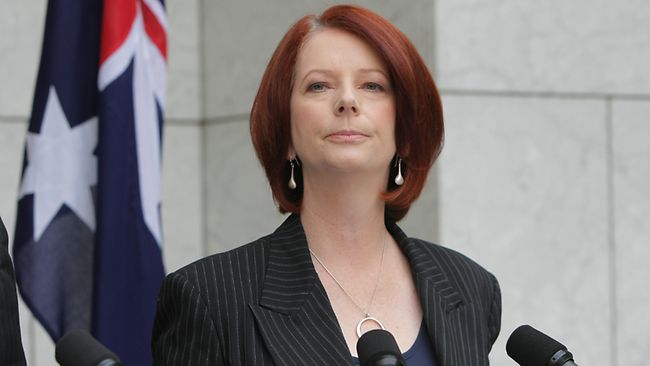 , an opponent of same sex-marriage, will host a meal for two lesbian couples and a pair of gay men at her official residence after an Australian activist group won a charity auction. The couples will use the dinner in the national capital of Canberra to lobby the prime minister to allow gay marriage. The 12-year-old son of one of the women, Matthew Miller, will present Gillard with flowers and two letters explaining why he and his brother Dylan, aged 9, would like their biological mother Sandy Miller, 40, to marry the other woman whom they call their mother, Louise Bucke, 36. But the Sydney-based boys won’t stay for dinner. “Since they’re not allowed to get married, they’re basically being called not normal and we’re not known as a proper family,” Matthew Miller said at a function at Parliament House before the dinner.
, an opponent of same sex-marriage, will host a meal for two lesbian couples and a pair of gay men at her official residence after an Australian activist group won a charity auction. The couples will use the dinner in the national capital of Canberra to lobby the prime minister to allow gay marriage. The 12-year-old son of one of the women, Matthew Miller, will present Gillard with flowers and two letters explaining why he and his brother Dylan, aged 9, would like their biological mother Sandy Miller, 40, to marry the other woman whom they call their mother, Louise Bucke, 36. But the Sydney-based boys won’t stay for dinner. “Since they’re not allowed to get married, they’re basically being called not normal and we’re not known as a proper family,” Matthew Miller said at a function at Parliament House before the dinner.
Other guests are Brisbane academic Sharon Dane, 54, who married her wife Elaine Crump, 53, in Canada in a ceremony that is not recognized in Australia. Gay couple Steve Russell, 51, and John Dini, 29, decided against marrying overseas because it would carry no weight in Australia. While they could have a civil union recognized under state law in their hometown of Melbourne, they don’t regard that as equivalent to marriage.
The activist group GetUp! paid 31,000 Australian dollars ($33,270) for the dinner when they won a bidding war against a Christian lobby group at the Press Gallery of Australia annual charity ball in June last year. Gillard’s Labor Party in December lifted its long-standing opposition to gay marriage, and three separate bills have been introduced to Parliament that would change the law which states that only a man and woman can marry.
But Gillard remains opposed to gay marriage, and it is unclear whether any bill would attract sufficient support to enable same-sex couples to marry. No date has been set for a vote in Parliament on gay marriage. Polls show that most Australians support gay marriage, but the conservative opposition coalition and many government lawmakers remain opposed.
 , an opponent of same sex-marriage, will host a meal for two lesbian couples and a pair of gay men at her official residence after an Australian activist group won a charity auction. The couples will use the dinner in the national capital of Canberra to lobby the prime minister to allow gay marriage. The 12-year-old son of one of the women, Matthew Miller, will present Gillard with flowers and two letters explaining why he and his brother Dylan, aged 9, would like their biological mother Sandy Miller, 40, to marry the other woman whom they call their mother, Louise Bucke, 36. But the Sydney-based boys won’t stay for dinner. “Since they’re not allowed to get married, they’re basically being called not normal and we’re not known as a proper family,” Matthew Miller said at a function at Parliament House before the dinner.
, an opponent of same sex-marriage, will host a meal for two lesbian couples and a pair of gay men at her official residence after an Australian activist group won a charity auction. The couples will use the dinner in the national capital of Canberra to lobby the prime minister to allow gay marriage. The 12-year-old son of one of the women, Matthew Miller, will present Gillard with flowers and two letters explaining why he and his brother Dylan, aged 9, would like their biological mother Sandy Miller, 40, to marry the other woman whom they call their mother, Louise Bucke, 36. But the Sydney-based boys won’t stay for dinner. “Since they’re not allowed to get married, they’re basically being called not normal and we’re not known as a proper family,” Matthew Miller said at a function at Parliament House before the dinner.Other guests are Brisbane academic Sharon Dane, 54, who married her wife Elaine Crump, 53, in Canada in a ceremony that is not recognized in Australia. Gay couple Steve Russell, 51, and John Dini, 29, decided against marrying overseas because it would carry no weight in Australia. While they could have a civil union recognized under state law in their hometown of Melbourne, they don’t regard that as equivalent to marriage.
The activist group GetUp! paid 31,000 Australian dollars ($33,270) for the dinner when they won a bidding war against a Christian lobby group at the Press Gallery of Australia annual charity ball in June last year. Gillard’s Labor Party in December lifted its long-standing opposition to gay marriage, and three separate bills have been introduced to Parliament that would change the law which states that only a man and woman can marry.
But Gillard remains opposed to gay marriage, and it is unclear whether any bill would attract sufficient support to enable same-sex couples to marry. No date has been set for a vote in Parliament on gay marriage. Polls show that most Australians support gay marriage, but the conservative opposition coalition and many government lawmakers remain opposed.
US-South Korea war games are ‘military threat’: North Korea
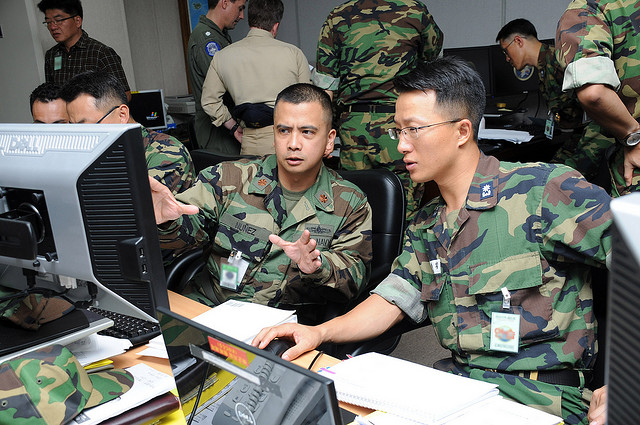 PYONGYANG: North Korea lashed out at the upcoming American-South Korean war games, saying this was “a military provocation and a simulation of a nuclear war”, In the opinion of the report’s authors, this large-scale exercise will be “a challenge to the entire world community, standing out for peace and stability in the Korean Peninsula.”
PYONGYANG: North Korea lashed out at the upcoming American-South Korean war games, saying this was “a military provocation and a simulation of a nuclear war”, In the opinion of the report’s authors, this large-scale exercise will be “a challenge to the entire world community, standing out for peace and stability in the Korean Peninsula.”The war games will be detrimental to relations between the North and the South, “will bring the situation in the peninsula to the brink of war”, the KCNA claimed. Pyongyang was especially riled by the intention of Seoul and Washington to stage ” Key Resolve” at the time when North Korean people “mourn as before in connection with the death of Kim Jong-Il.”
The commentary stresses that “severe punishment is in store for those who whip up flames of aggression.” The American-South Korean war games will be staged between February 27 and March 9. They will involve 200,000 South Korean men and officers as well as 2,100 American servicemen.
The exercise is held annually and is called upon to ensure readiness of the allies to protect South Korea and to maintain the might of the American-South Korean alliance, said commander of the joint armed forces of the two countries, General James Thurman. North Korea has been blasting the exercise for many years, calling it a preliminary move to an invasion into the North and threatening with a powerful retaliatory strike in response to any provocation.
Use of Twitter stokes row at Khmer Rouge court
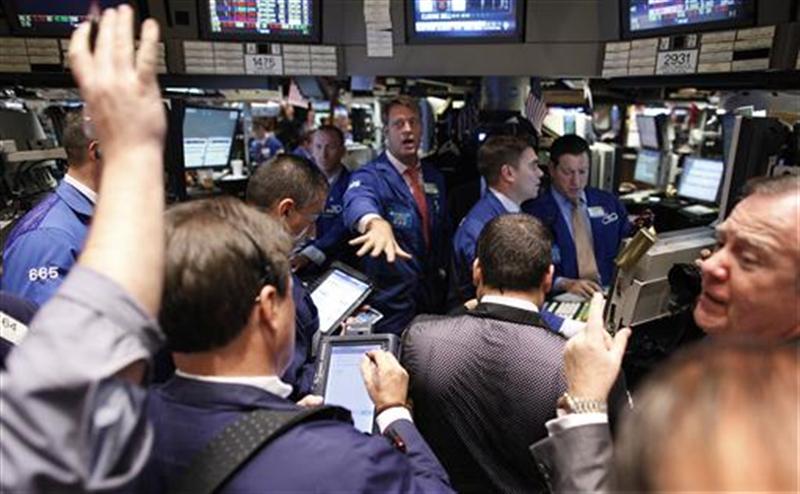 PHNOM PENH: Controversial tweets by a Khmer Rouge tribunal judge have inflamed a damaging public spat between the UN and Cambodia and raised questions over how Twitter is used in the courts. Laurent Kasper-Ansermet has angered Phnom Penh by using the micro-blogging site to draw attention to the court’s much-criticised handling of two possible new Khmer Rouge crimes against humanity cases.
PHNOM PENH: Controversial tweets by a Khmer Rouge tribunal judge have inflamed a damaging public spat between the UN and Cambodia and raised questions over how Twitter is used in the courts. Laurent Kasper-Ansermet has angered Phnom Penh by using the micro-blogging site to draw attention to the court’s much-criticised handling of two possible new Khmer Rouge crimes against humanity cases.Cambodia, which opposes prosecutions beyond two initial trials, has refused to endorse him as a new investigating judge, effectively halting new work at the UN-backed court, which was set up to seek justice for the deaths of up to two million people during the regime’s 1975-79 rule. “Does my known determination to investigate cases three and four explain the opposition by some to my official nomination?”, said the Swiss judge in a January 15 tweet in French after hearing his appointment had been rejected.
Last month Phnom Penh issued a statement saying the tweets “violate” judicial ethics and could “cause confusion or doubts” regarding his impartiality. Kasper-Ansermet stressed that most of his posts were links to news articles and date back to when he was still a reserve judge. “I was interested in what was happening at the court,” he said. “At no time did I express my personal view or disclose any confidential information.”
The United Nations has called Cambodia’s “ethical concerns” about the judge “unfounded” and stands by the appointment, which filled the vacancy created when a German judge abruptly resigned in October citing political interference at the court. The brutal Khmer Rouge presided over the deaths of almost a quarter of the country’s population through starvation, overwork and execution in a bid to create an agrarian utopia.
But the Cambodian government, which counts many former Khmer Rouge members among its ranks, strongly objects to trials beyond the court’s first two cases involving a former prison chief and three top ex-regime leaders, claiming that going after more suspects could destabilise the country. While observers agree that Phnom Penh is using the tweets as a pretext to obstruct further prosecutions, they say the Twitter-friendly Swiss judge has provided the government with ammunition.
Even now, I can’t wait to go out to bat: Sachin Tendulkar
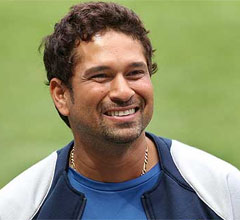 MUMBAI: For over two decades, Sachin Tendulkar has been used to carrying the burden of expectations of the entire nation on his shoulders. When he got stuck on 99 international hundreds, the pressure of scoring that one hundred became unbearable. How heavy that burden of expectations was could be judged by what Tendulkar felt while batting against Pakistan. “It was different, different in the sense that the thought of ‘that’ (100th 100) was not there!”
MUMBAI: For over two decades, Sachin Tendulkar has been used to carrying the burden of expectations of the entire nation on his shoulders. When he got stuck on 99 international hundreds, the pressure of scoring that one hundred became unbearable. How heavy that burden of expectations was could be judged by what Tendulkar felt while batting against Pakistan. “It was different, different in the sense that the thought of ‘that’ (100th 100) was not there!”He was indeed relaxed during that knock of 52 which brought back the retirement question: Where do you go from here? “As I said before, I am enjoying it out there. The fact is, even, I just can’t wait to get out on the park. Yes, I need to understand now when I need to go and how long to stay.” Tendulkar pointed out that all through last year he was batting well. “To be honest, the way I batted in Australia was one of the best in my life. In the first three Tests my feet moved really, really well. I felt wonderful about my footwork and I played with a lot of freedom. I was always in the zone. Unfortunately, I couldn’t convert my knocks into big scores. Despite feeling good and batting well, I was missing out. It was a testing time for me. I felt, maybe it is God’s wish. I kept trying.”
As Tendulkar soaked in the pressure all by himself, his wife, Anjali, and other family members silently shared his agony. “My family has sacrificed immensely. Without them things wouldn’t have been the same. That I spend so much time away from them is a huge sacrifice on their part. The milestone added huge pressure on the family as well. My mother, wife, children, brothers and sisters were all deeply concerned about my health and mental well-being but they never shared it with me.” There was no apparent reason to explain the year-long century drought though. “The journey to my 100th hundred became really tough with every game that I played. The expectations just kept growing. It was something I never experienced before in my career,” he says.
Tendulkar also dismissed allegations that he picks and chooses his tours. “People said all kinds of things when I didn’t go to the West Indies. But I did it only because I wanted to spend some time with my family. I had been playing for 12 months before that and, if I hadn’t taken that break, I would have had to wait another 12 months. It would have meant I had to be away from the family for 24 months which would have been very long. Also, my children had school holidays, so I approached the BCCI and they graciously agreed.” Soon after the West Indies tour came the tour of England and all the talk there was about Tendulkar’s 100th ton instead of the clash between two top Test teams. “People talked about only one thing. It frustrated me,”
Like everyone else, Tendulkar too believed there were four or five occasions when he thought he could have scored a hundred. “In England, at the Oval, where I made 91, I thought it was going to happen because I was very much in control. Also, during the Mumbai Test (he made 94) against the West Indies, and in Melbourne (he made 73) and Sydney (he scored 80) recently in Australia. It pushed me mentally but, somehow, I couldn’t get to the landmark.”
Is Virat Kohli world’s best ODI batsman?
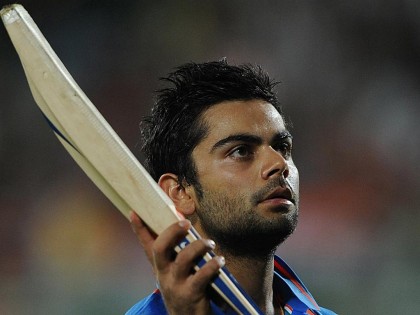 NEW DELHI: If it is Mission Impossible, dial Virat Kohli. When the 23-year-old from west Delhi bats these days, no bridge seems too far and no target too big. Twice in the space of three weeks, he has almost single-handedly achieved the near-impossible for India. Kohli’s 183 off 148 balls against Pakistan helped India record its highest ever run chase of 330 with 2.1 overs to spare. “Bura na mano Kohli hai,” went around an SMS as he raged like a storm in Mirpur. The pun was on Holi, but Kohli batted as if it was Diwali. The cricketing fireworks turned into real fireworks nationwide after India triumphed.
NEW DELHI: If it is Mission Impossible, dial Virat Kohli. When the 23-year-old from west Delhi bats these days, no bridge seems too far and no target too big. Twice in the space of three weeks, he has almost single-handedly achieved the near-impossible for India. Kohli’s 183 off 148 balls against Pakistan helped India record its highest ever run chase of 330 with 2.1 overs to spare. “Bura na mano Kohli hai,” went around an SMS as he raged like a storm in Mirpur. The pun was on Holi, but Kohli batted as if it was Diwali. The cricketing fireworks turned into real fireworks nationwide after India triumphed.Last month at Hobart, his 133 off 86 balls helped overhaul Sri Lanka’s 320 with 13.2 overs to spare. That afternoon, too, Kohli made batting look like a walk in the park. It’s been that way for a while. This year his overall ODI average stands at a mind-boggling 73 and the strike rate is 97. Last year, he was the world’s highest scorer in ODIs and the second-highest the year before. It doesn’t get any better than this. Undoubtedly, Kohli is the hottest ODI batsman on the planet. But is he the best too? That’s what the statistics seems to suggest, especially when compared to the other batting greats at a similar stage – 85 games – of their respective careers. Consider this. None of the following – Brian Lara, Ricky Ponting, Dean Jones, MS Dhoni, Michael Bevan, and even Sachin Tendulkar and Vivian Richards – had better records than Kohli at this stage.
After 85 games, Kohli has scored 11 centuries. Nobody comes close; Lara (5) and Pointing (5) being next. In this illustrious bunch, Kohli’s overall strike rate 86.31 is third only to Dhoni’s 96.26 and Richards’s 86.99 at the same stage. And his average (50.56) is second only to Bevan’s 56.54. Statistics suggest that Virat Kohli is the best ODI batsman in the world now. It isn’t just the runs he has scored so far; it is also the manner and situation in which he has fetched them. Out of his 11 centuries, 10 have come in winning causes; seven of them in a run chase.
Thanks to him, run chases are no longer nervous affairs for India. And he seems to shun last-over heroics; Kohli prefers to finish early and in style. Only one thing jars: that his celebration seems incomplete without reference to mothers and sisters. Once set, Kohli seems to always be in control. He seems to bring his leadership skills even to batting. His strokeplay is cultured; slogs are rare. There’s plenty of wristwork on display and power too.
Kohli prefers to play along the ground but is not averse to the lofted stroke. And he plays the pull with poise. He was the only Indian batsman who read Saeed Ajmal. Barring one delivery that was edged for four, he had an answer to every doosra or teesra that the Pakistan spinner offered. Before the Australia tour, most experts had put their money on Rohit Sharma as the one more likely to succeed. Kohli proved them wrong, being the faster adapter and quicker learner. Ever since he made his ODI debut against Sri Lanka in August 2008, Kohli has grown and evolved beyond recognition.
As an 18-year-old, Kohli came to bat for Delhi on the day his father passed away because his team needed him. He scored 90 and steered his team to safety against Karnataka before he fell to a poor umpiring decision. Even at that age, Kohli stood out for his amazing commitment and rare temperament. Now, Kohli is many things to many people. For the cricket fan, he is a future India captain. For media managers, he is that special face that can sell a million hair gels and mobile phones. For teenage girls, he is the pin-up of their dreams. Kohli is reaching for the stars and corporates for the cheque book.
A year after Sourav Ganguly smashed 183 against Sri Lanka in the 1999 World Cup, he became India’s captain. Dhoni marched to ODI team’s captaincy two years after hitting that brilliant 183 against Sri Lanka in 2005.
Age is just a number for red-hot Roger Federer
 INDIAN WELLS: Swiss superstar Roger Federer is setting his sights on more Grand Slams, after winning his third-straight tournament in Indian Wells. The 16-time Grand Slam winner had to fight off a cold and a strong field to capture his fourth Indian Wells title. “Well, naturally I love winning tennis tournaments, especially when you put in all the hard work and the sacrifice of playing a lot of matches before this to make sure I get some momentum and confidence going,” Federer said after beating John Isner 7-6 (9/7), 6-3 in the Indian Wells final.
INDIAN WELLS: Swiss superstar Roger Federer is setting his sights on more Grand Slams, after winning his third-straight tournament in Indian Wells. The 16-time Grand Slam winner had to fight off a cold and a strong field to capture his fourth Indian Wells title. “Well, naturally I love winning tennis tournaments, especially when you put in all the hard work and the sacrifice of playing a lot of matches before this to make sure I get some momentum and confidence going,” Federer said after beating John Isner 7-6 (9/7), 6-3 in the Indian Wells final.“Then when it all pays off, after a bit of a scare early in the week, and you get the title and the emotions are going, it’s a wonderful feeling.” Federer has won 15 straight matches, three consecutive tournaments and six of his last eight. His last lost this year was to Isner in Davis Cup in February but he avenged that by beating 11th seeded American.
“It’s nice taking it all the way and getting the victories,” he said. “I was just extremely proud of my performance.” World number three Federer will play the next tournament in Miami and then take a well deserved break. “I’m happy I have been holding up because it’s been a lot of tennis and I am definitely looking forward to a break soon,” he said.
“But I will push for one more in Miami, and then I’ll probably have to take a week off or so and then I will manage my schedule all the way through to the French Open.” Many people were starting to write Federer off last season when he turned 30 and his game dropped off a bit. Last year was the first time since 2002 that Federer did not win at least one Grand Slam title.
But age is just a number for Federer. “Some people don’t understand how you can play tennis at 30 years old which is shocking to me because normally that’s still when you’re young enough to play some of your best tennis,” Federer said.
“I think I’m showing that since I turned 30 in August last year. That’s basically when my run began. “But at the end of the day, it doesn’t matter what people say.”
Federer said that his biggest wish this year is to win a gold medal at the London Olympics. But he also wants to some day reclaim the world number one ranking. “I guess that’s a long, long-term goal,” he said. “I said it loud and clear that it’s not right now a goal for me in the short-term because I can’t be world No. 1 because Novak (Djokovic) has played amazing these last 12 months. “Just because I have been on a great run doesn’t mean he hasn’t.
“He might go and do another run or someone else might come up like Rafa ( Rafael Nadal) might go on his clay court run again and then all things become very difficult for me to get to world No. 1. “So right now that’s not even on top of my head. I’m just happy how well things are going, and I will try to use that momentum to win more tennis matches.”
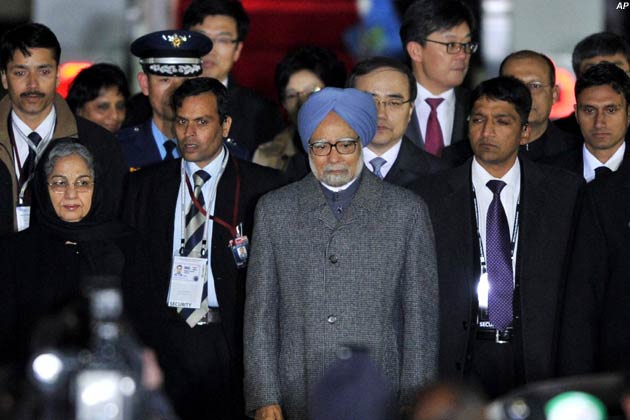
No comments:
Post a Comment